A Comprehensive Guide to Different Types of Braces
Aug 2, 2024
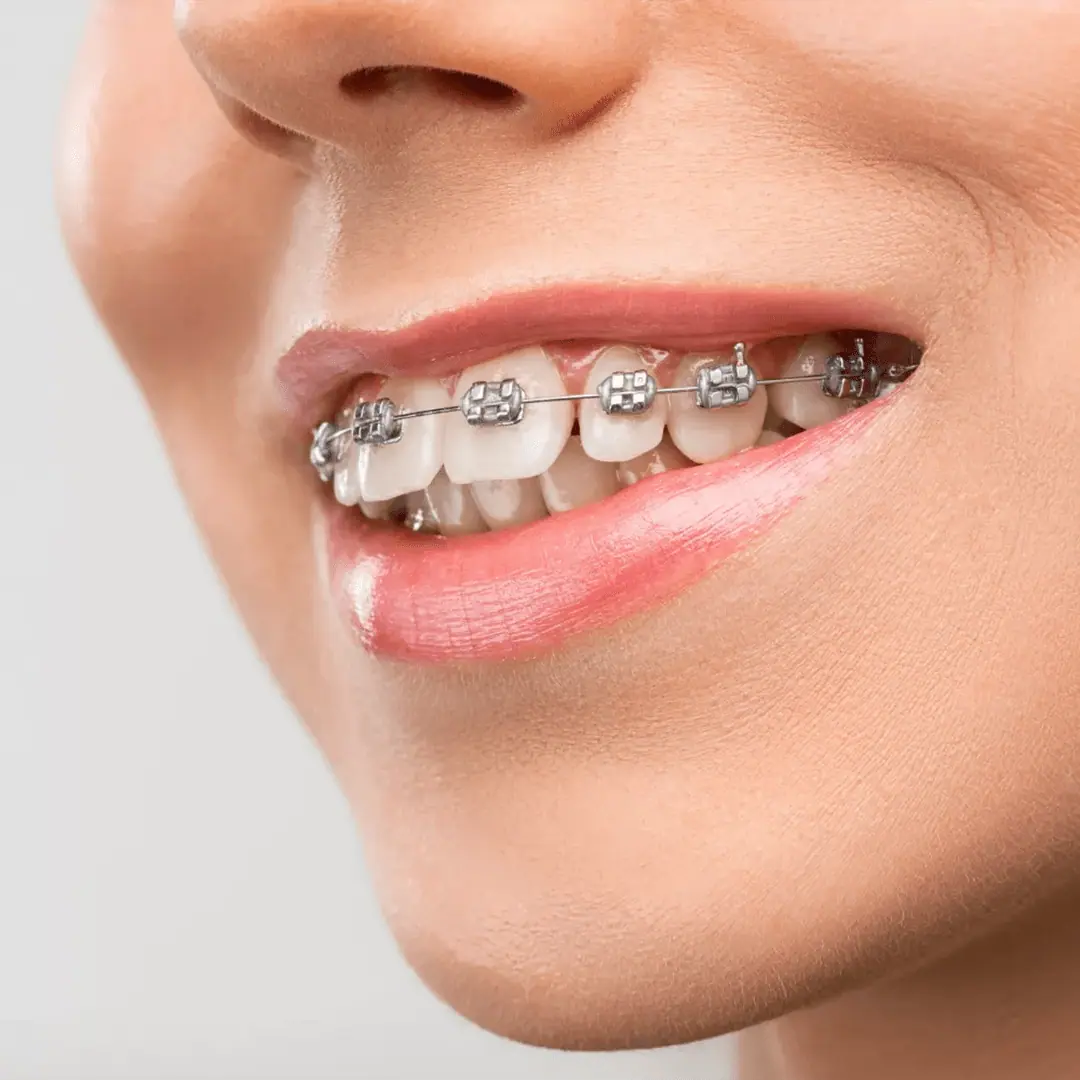
Imagine your teeth a flock of adorable sheep, scattered across the field, some are gathered together and some are far apart, but definitely not in line. Enter braces, the wise shepherd, guiding them into a perfectly aligned flock and creating a stunning pattern.
On the path to creating the perfect smile, many people struggle with orthodontic issues like misaligned, crowded, or crooked teeth. This is when orthodontic treatments become smile-saving heroes, slowly yet surely nudging your teeth back in place and crafting a picture-perfect smile.
Needless to say, the realm of orthodontics has been growing and progressing impressively in recent years. From traditional metal braces to invisible aligners and removable braces, the orthodontic evolution has brought several options to the dentist’s chair, catering to the various needs and preferences of the patients.
Whether you’re a teenager eager to dazzle everyone with a beautiful smile or an adult looking to rewrite your smile story, the question remains; are you ready to find the perfect braces for your smile? Let’s dive in!
Traditional Metal Braces
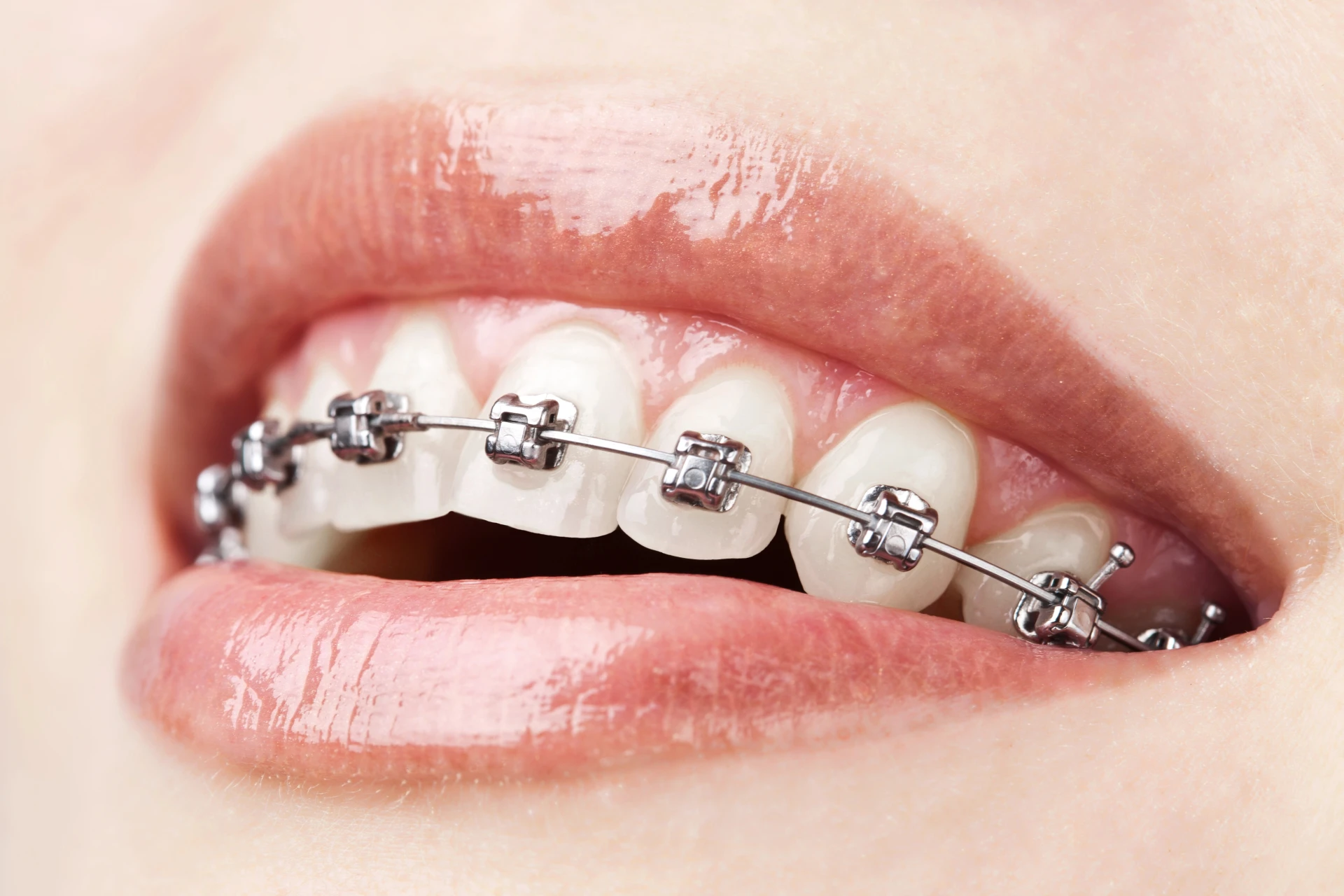
Metal braces are the most popular form of orthodontic treatment. These traditional braces are made of metal brackets and archwires sewed together to create the famous “train tracks”.
How Do They Work?
When getting traditional metal braces, metal brackets are bonded to your teeth and the wires pass through them and then attach to the brackets through ligatures, which are metal or rubber bands. These stainless steel braces apply gentle pressure to your teeth in order to move back into their proper positions and recreate a healthy smile.
What Dental Problems Can They Solve?
Traditional braces are versatile tools that can address a variety of orthodontic issues. Here are some common problems they can correct:
- Overcrowding: When there isn’t enough room on the gum line, teeth begin to fight for space, overlapping and pushing each other out of position.
- Crooked Teeth: Medically known as malocclusion, is when teeth become misaligned, bending, or twisting out of shape. An orthodontic condition that’s highly common among children and adults.
- Spacing: Contrary to overcrowding, teeth spacing is when gaps between teeth begin to form and grow wider. These small windows can largely affect your bite and your smile’s appeal.
- Underbite: An underbite is a condition where your lower teeth extend farther than your upper teeth. It can be caused by a misalignment of the jaw or teeth.
- Overbite: This refers to a vertical misalignment of your teeth. It happens when your upper teeth overlap your lower teeth more than they should. Left untreated, overbite can cause oral health issues like jaw pain, tooth erosion, and gum disease.
- Crossbite: In this condition, instead of overlapping your lower teeth, your upper teeth fit inside them, affecting bite, jaw, and facial development.
- Openbite: A lack of contact between the upper and lower teeth. This bad bite causes aesthetic and functional alterations like chewing, phonation, and breathing disorders.
What Makes Them Special?
Traditional metal braces are a fixed dental appliance, which allows for better control and precise teeth movement, especially in complex cases. They’re also highly durable and built to last, making them a suitable option for patients who might be rough on their teeth. A fun aspect of conventional braces is customization! You can personalize your look with colored bands.
Are They Flawless?
Just like everything in life, metal braces aren’t perfect. Wearing them means you need to avoid crunchy, sticky, and chewy foods such as nuts, gum, and popcorn. Certain foods may either break the brackets or get stuck in your braces. They’re also not the most aesthetically pleasing type of braces. People who are self-conscious about their smile will probably prefer a more discreet option. Depending on the complexity of the case the duration of treatment can normally take 18 to 24 months to be completed.
One thing remains certain though, metal braces are a tested and effective orthodontic solution with predictable results. It has changed the lives of millions by giving them the chance to explore a world of straight, confident smiles.
Ceramic Braces
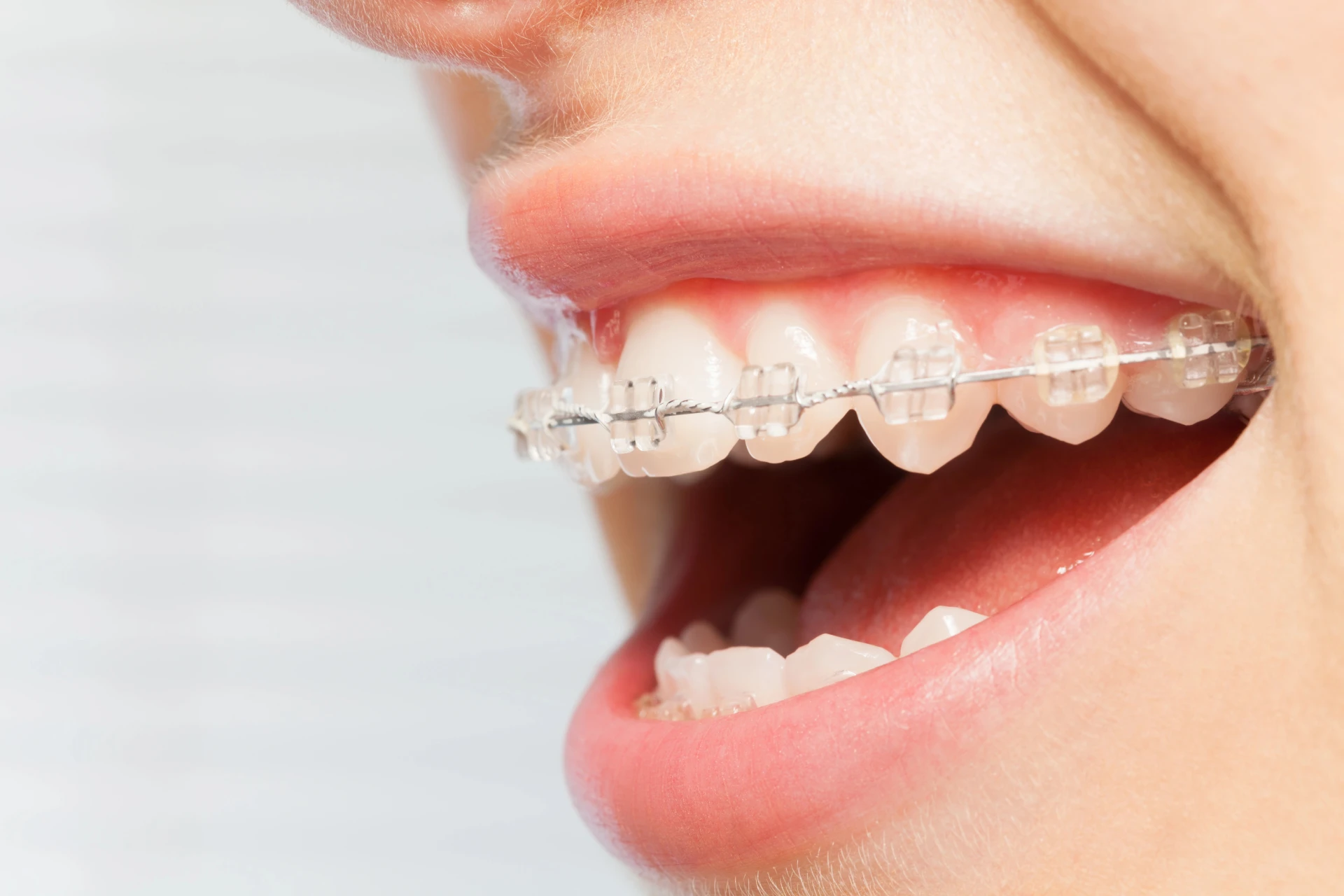
They’re just like metal braces, except you can’t see them. These tooth-colored braces consist of non-conventional brackets and an archwire, the brackets are made from a ceramic material, most likely composite or porcelain. The archwire, however, is made from metal and it provides the necessary force to move the teeth back in place over time.
What Do They Have In Common With Traditional Braces?
Other than the metal wires, both types of braces effectively correct misaligned teeth and bite issues. Essentially, any dental issue that can be corrected with traditional metal braces can also be addressed with ceramic braces. The primary difference lies in the appearance, as ceramic braces are designed to blend in with the color of your teeth.
Why Are They More Preferable?
Ceramic braces have become a popular choice of orthodontic appliances and a personal preference for many due to a very simple reason; their aesthetic appeal! The ceramic brackets blend in with the tooth color, making them subtly inconspicuous and easy to miss by others. People who desire a straighter smile but can’t afford to sacrifice looks, especially those who rely on a certain appearance for their occupation; find a great match for their preferences and needs in glass-like ceramic braces.
Are They Less Strong Than Regular Metal Braces?
Contrary to common belief, these invisible braces are firm and hardwearing. Although they’re not as strong as regular metal braces, the porcelain or composite material can withstand a significant amount of pressure and doesn’t break easily. One thing is sure though, anything strong enough to break metal brackets will most definitely destroy ceramic brackets.
Are They As Effective As Their Metal Counterparts?
While they may not be as strong, they’re as effective if not even more! Ceramic and metal braces are both equally effective, but ceramic braces are much more aesthetically pleasing and they also deliver faster results.
Is Coffee Stains an Issue With Ceramic Braces?
This type of braces allows caffeine lovers to enjoy coffee or tea without having to worry about stains! The idea that ceramic braces stain easily is a myth, as it defeats the point of being discreet. While the elastic bands might change color when exposed to certain foods and drinks, the attachments covered with ceramic material will never stain.
How Long Does the Treatment Take?
Ceramic dental braces offer shorter treatment times than regular metal braces. Depending on the severity of your condition, it can take between 12 to 18 months on average but can be shorter or longer. Ceramic is the way to go if you’re looking for a faster, better-looking alternative to metal braces.
Lingual Braces
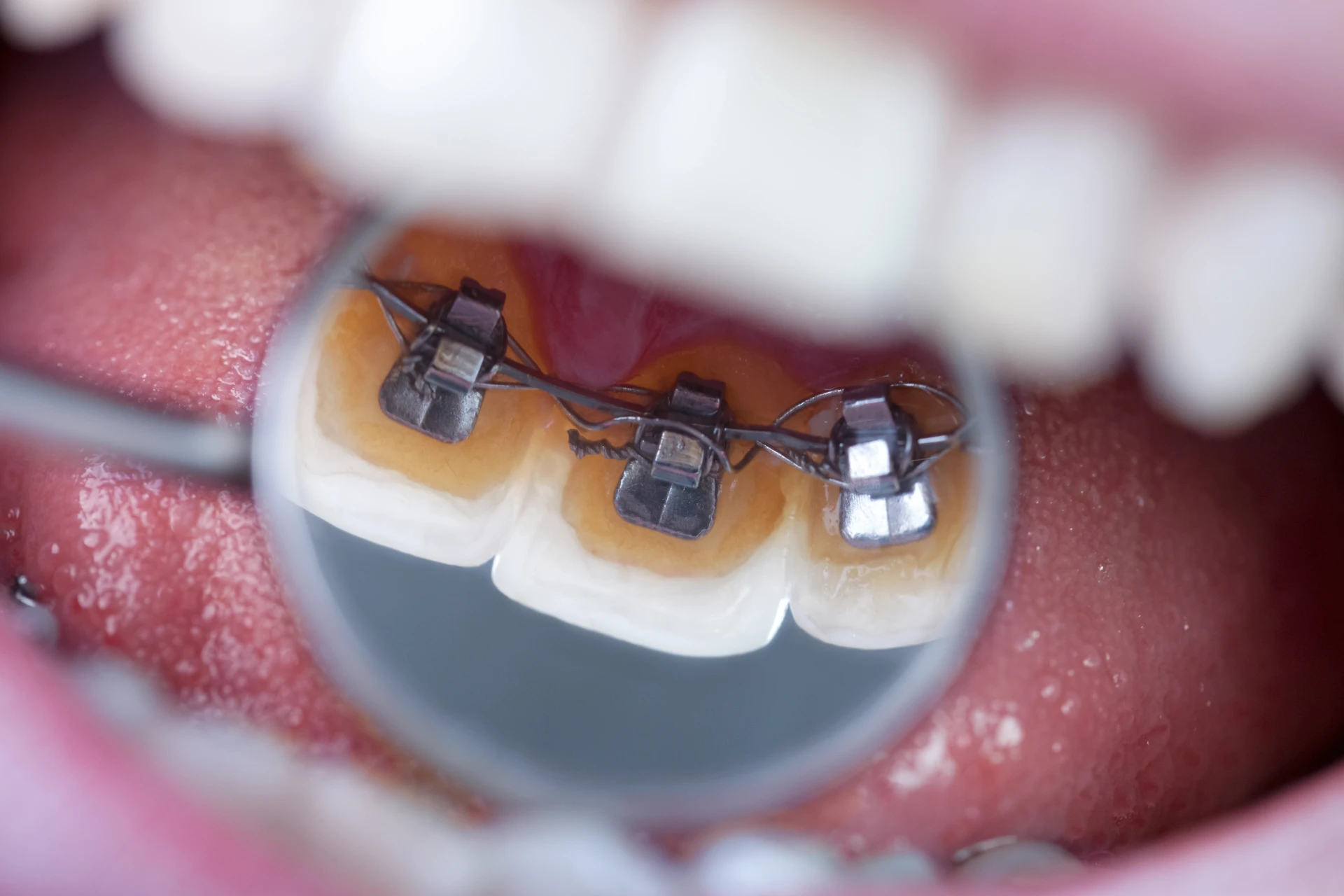
Lingual braces work behind the scenes of your smile project, meticulously realigning your teeth without anyone noticing them. The main difference with this type of dental braces is their position. Uniquely, lingual braces are bonded to the back of the teeth after having them cleaned, scaled, and polished—the ultimate secret orthodontic appliance.
Are They Less Effective?
Saying that lingual braces aren’t efficient due to their position is a common misconception. They are just as effective as regular braces, and they even perform better in certain cases. There is no need to remove lingual braces as patients normally do with removable aligners; they adjust the teeth’ position throughout the entire time of the treatment while remaining hidden behind your newly formed smile.
Who Needs Them Most?
To be frank, incognito braces are suitable for all ages, but adults are more likely to be allured by them. As we grow older we become more conscious about our appearance, especially as we engage more in work, social life, and important events. Therefore, lingual braces are a great option for individuals seeking a discreet solution for orthodontic issues.
Can They Be More Aesthetically Pleasing?
Yes! While the brackets and wires are hidden behind the teeth, the results are there for all to see. With nothing covering the surface of teeth, you’ll gradually witness your teeth coming together and forming a straight, delightful smile.
Do They Work Faster?
Lingual braces don’t offer treatment duration advantages, they take as much time as conventional metal braces to get the job done. Again, it all depends on the complexity of the case and the patient’s compliance.
Invisalign
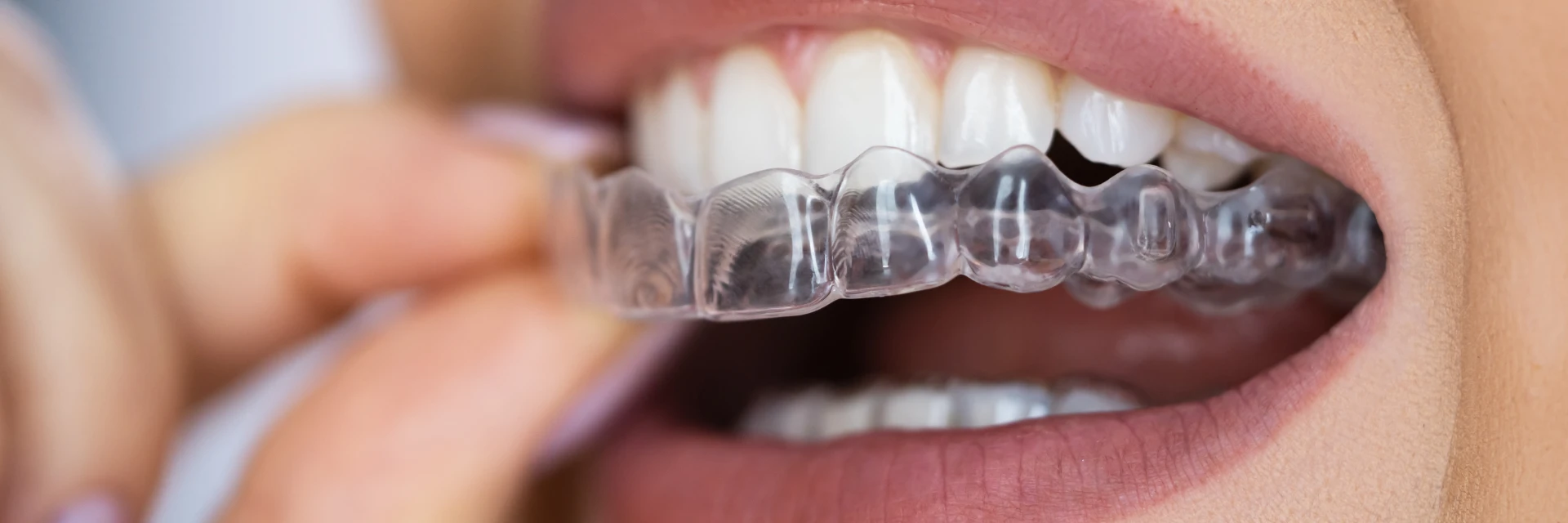
Invisalign is without a doubt the most revolutionary orthodontic device to this day. These clear aligners evade a spectrum of the disadvantages associated with other orthodontic appliances, such as discomfort, lengthy treatment times, aesthetic concerns, and others. In doing so, Invisalign has become a major go-to option for teeth alignment.
How Does Invisalign Offer a Fresh Orthodontic Perspective?
Virtually invisible. While ceramic braces are tooth-colored and lingual braces sit on the back of your teeth, Invisalign clear aligners are even better at being unnoticeable. Let’s say, if someone doesn’t squint hard trying to spot them, they won’t.
Unlike regular braces, Invisalign has zero dietary restrictions! You can enjoy eating and drinking whatever you desire. All you need to do is take your Invisalign off, eat, clean your teeth, and put your aligners back on; sweet and simple.
Improved comfort is a key benefit of choosing Invisalign as an orthodontic treatment. Those smooth, custom-made, clear plastic aligners eliminate the common discomfort of metal wires and brackets. Invisalign fits effortlessly against your teeth without causing irritation.
Does Invisalign Hurt While Shifting Teeth Into Position?
Not at all. These invisible aligners apply gentle pressure to move your teeth into their correct positions, the force is gradual and controlled. This means you’ll experience minimal discomfort compared to the sometimes intense pressure and tightening associated with adjustments of traditional braces.
What Is the Average Treatment Duration?
Once again, Invisalign demonstrates its unique advantages. While regular braces usually take a year and a half to three years to complete treatment, Invisalign incredibly delivers the intended results within 6 to 18 months.
Does Invisalign Facilitate Oral Hygiene?
The removable nature of Invisalign makes oral hygiene much less complicated to maintain. Common dental issues of other types of braces include food particles getting stuck between the brackets and difficulty brushing or flossing effectively. Invisalign allows you to take proper care of your teeth and gums, avoiding potential issues during treatment.
What’s Invisalign’s Best Quality?
Invisalign is more than just orthodontics; it’s a transformative journey to a confident new smile. Discreetly correct crowded teeth, bite issues, and misalignments while enhancing your natural beauty. Invisalign offers the perfect blend of effective treatment and undetectable style.
Swedish Dental Clinic: Your Premier Destination for Orthodontic Treatment in Dubai
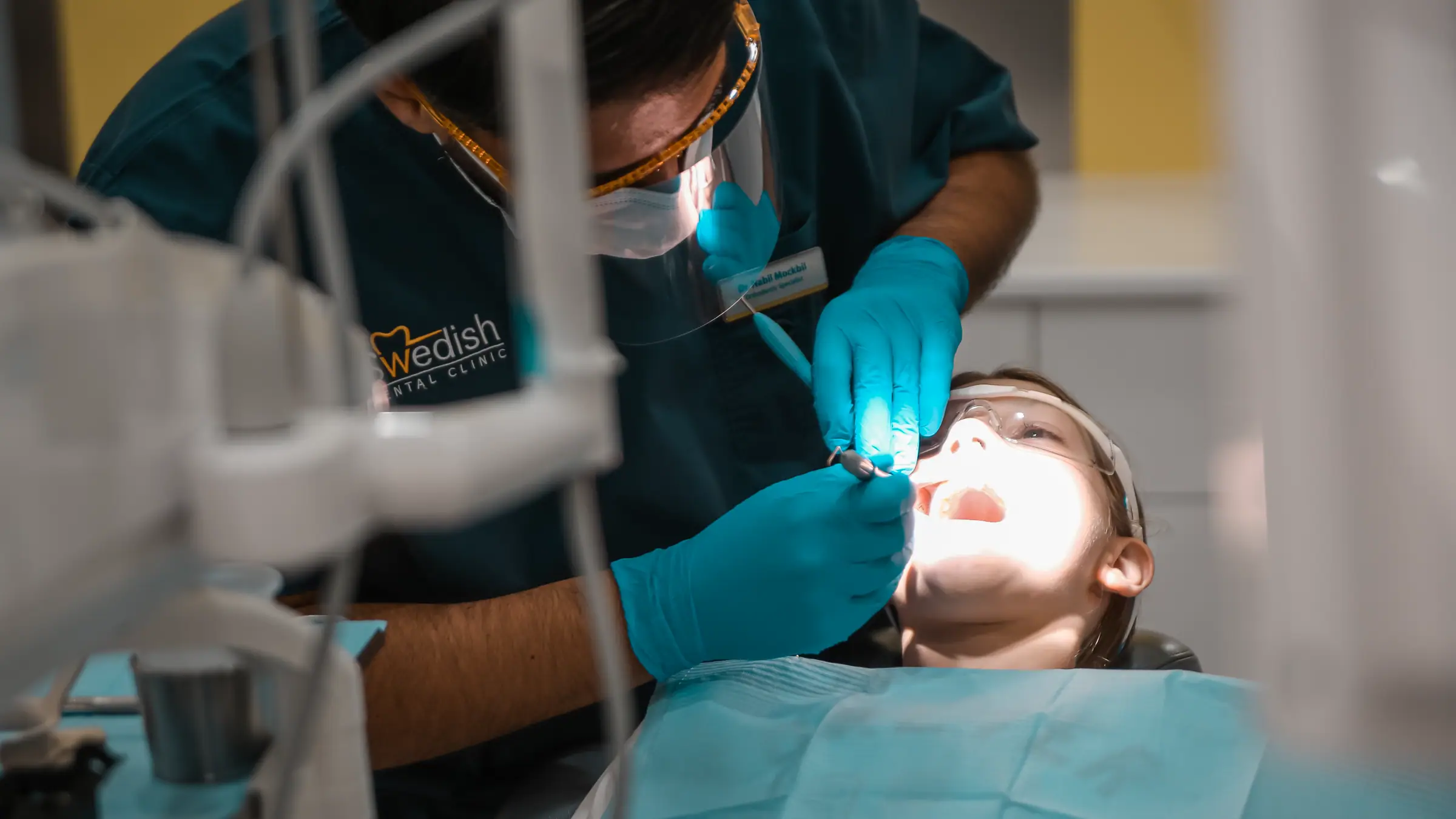
Swedish Dental Clinic in Dubai stands out as an exceptional choice for orthodontic treatment. Renowned for its unique approach to dental care, the clinic combines advanced technology with a patient-centric philosophy. Whether you’re seeking traditional braces or innovative orthodontic solutions, our expert team delivers world-class care, ensuring beautiful smiles and optimal oral health.

Dr. Nabil Mockbil, DDS, BDS
Dr. Nabil Mockbil is the head of Swedish Dental Clinic and one of the most experienced orthodontists in Dubai. By demonstrating incredible skills and embracing a kind attitude, he's proven to be not just a brilliant dentist, but someone you can fully trust with your smile. With 20+ years of experience under his belt and a warm smile on his face, you're search for the best orthodontist in Dubai ends with him.




